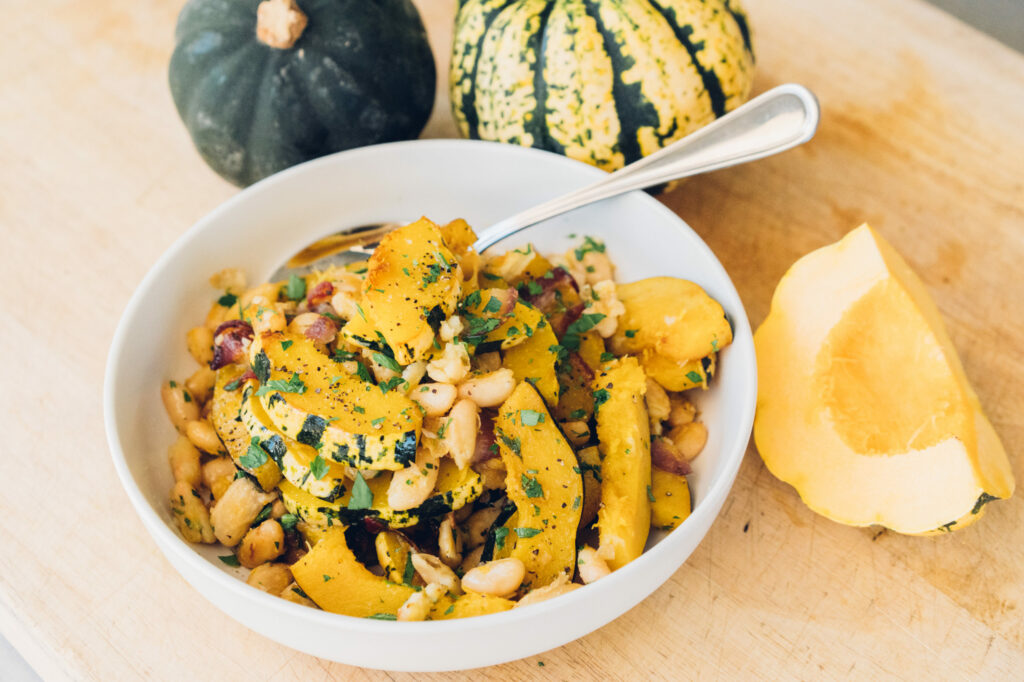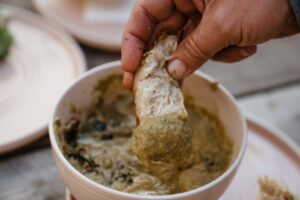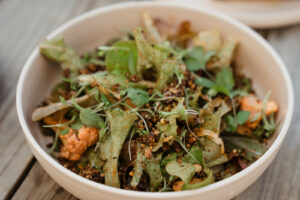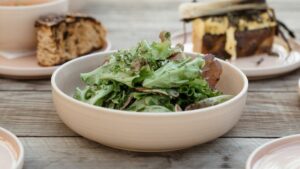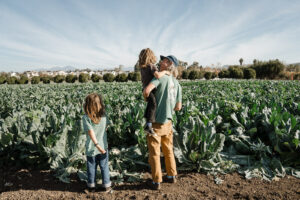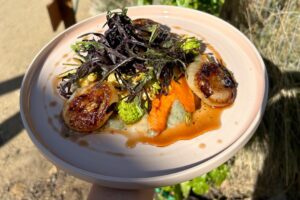We grow many varieties of winter squash on the farm, of all shapes and colors. In this recipe, we used acorn squashes, but feel free to use other squashes of preference like delicata or kabocha. You can remove the rind or keep it for extra texture.
| Ingredients | |
|---|---|
| 1 – 2 | acorn squashes |
| 1 cup | cooked white beans, like cannellini |
| 1 | lemon |
| 1/2 | red onion |
| – | parsley |
| – | olive oil |
| – | salt and pepper |
Wash the squashes, cut them in half and spoon out the seeds (you can save the seeds and roast for a snack or discard and compost them).
Cut the squash into ½ inch half moons then cut into smaller pieces or leave as is.

Chop the onion in half moons and place in a large pan with 1-2 tablespoons of olive oil.

Sautee for 5 minutes, then add the squash, cover with a lid. Stir every 5 minutes or so to make sure nothing sticks to the bottom of the pan.

Once the squash is almost done, 10 or 15 minutes (you want to make sure the squash is cooked enough but retains it’s form without getting mushy), add the cooked beans and cook for a couple of minutes. Turn the heat off, add chopped parsley, the zest and juice of half a lemon. Season with salt and pepper, drizzle with some olive oil and serve.


